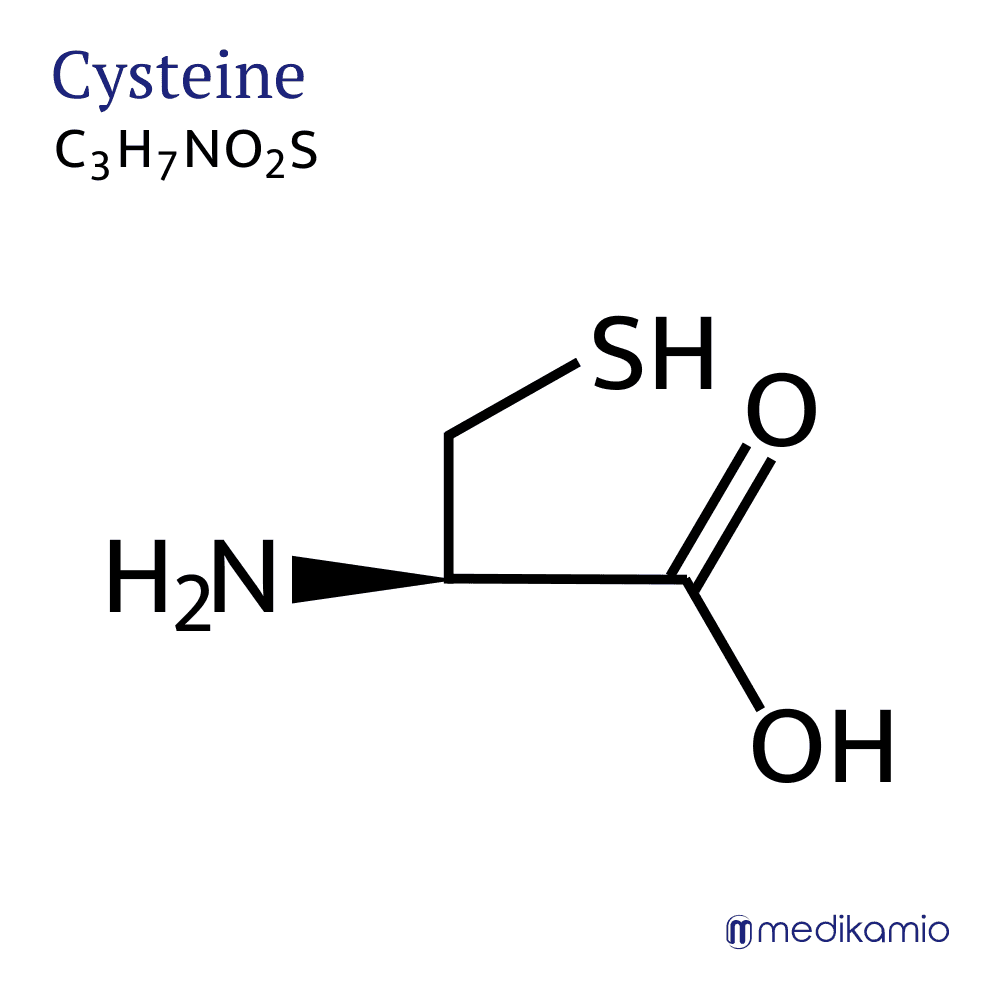Basics
Cysteine is an active ingredient that can be used to treat hair loss and brittle nails. It is also used as a substitute for malnutrition. Cysteine is a semi-essential amino acid in our body, which can be produced by the body itself, but the body needs an essential amino acid for this, which in the case of cysteine is methionine. In general, all essential amino acids must be supplied with food because our body cannot produce them itself. It can produce all others itself by converting nutrients. The other essential amino acids include histidine, isoleucine, leucine, lysine, methionine, phenylalanine, tyrosine, threonine, tryptophan and valine. Cysteine not only plays an important role in the synthesis of fatty acids, but also in the immune system. From a chemical point of view, the sulphur atom of cysteine is relevant, as this can lead to the formation of disulphide bridges, which in turn is essential for the spatial structure of proteins.

